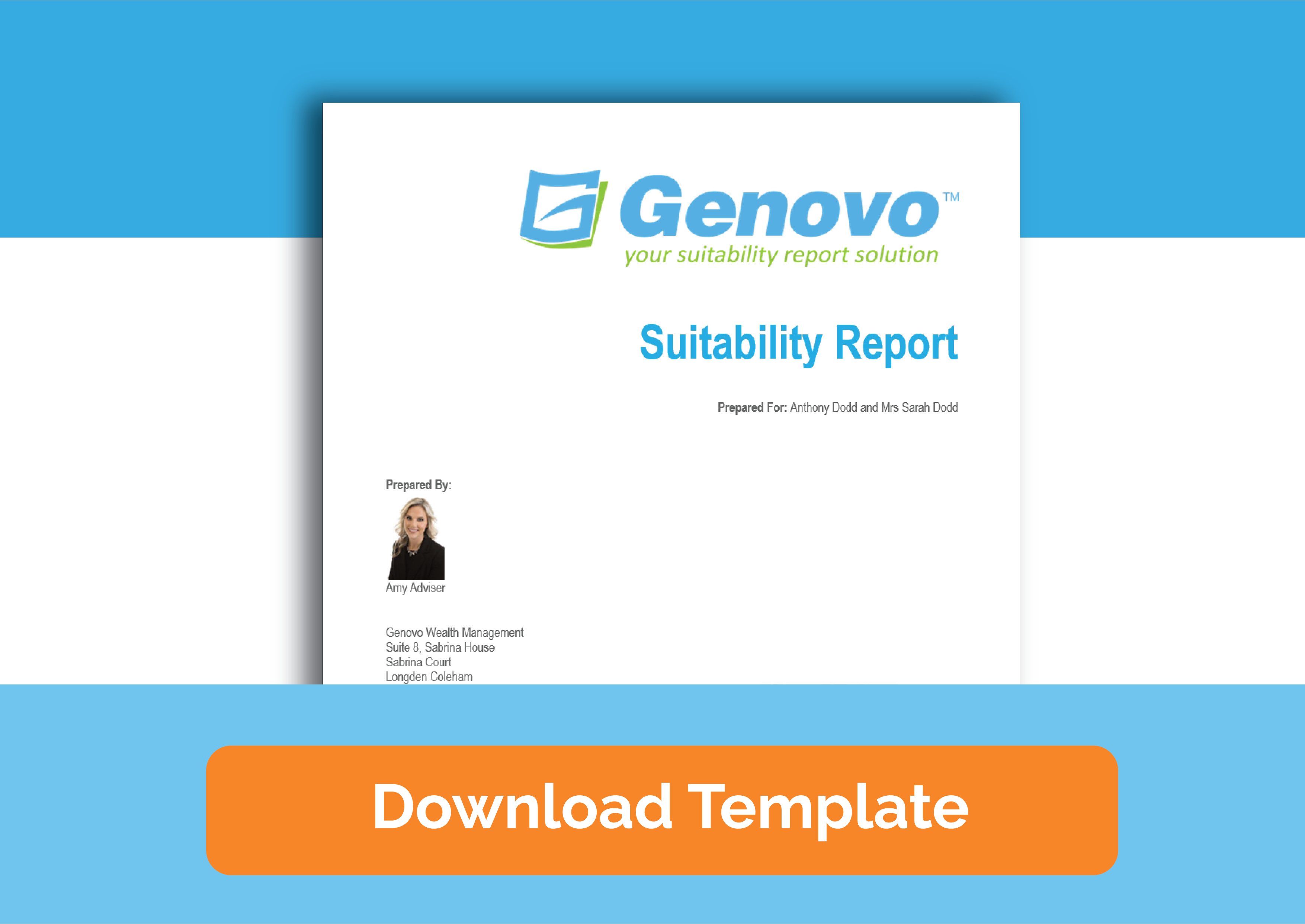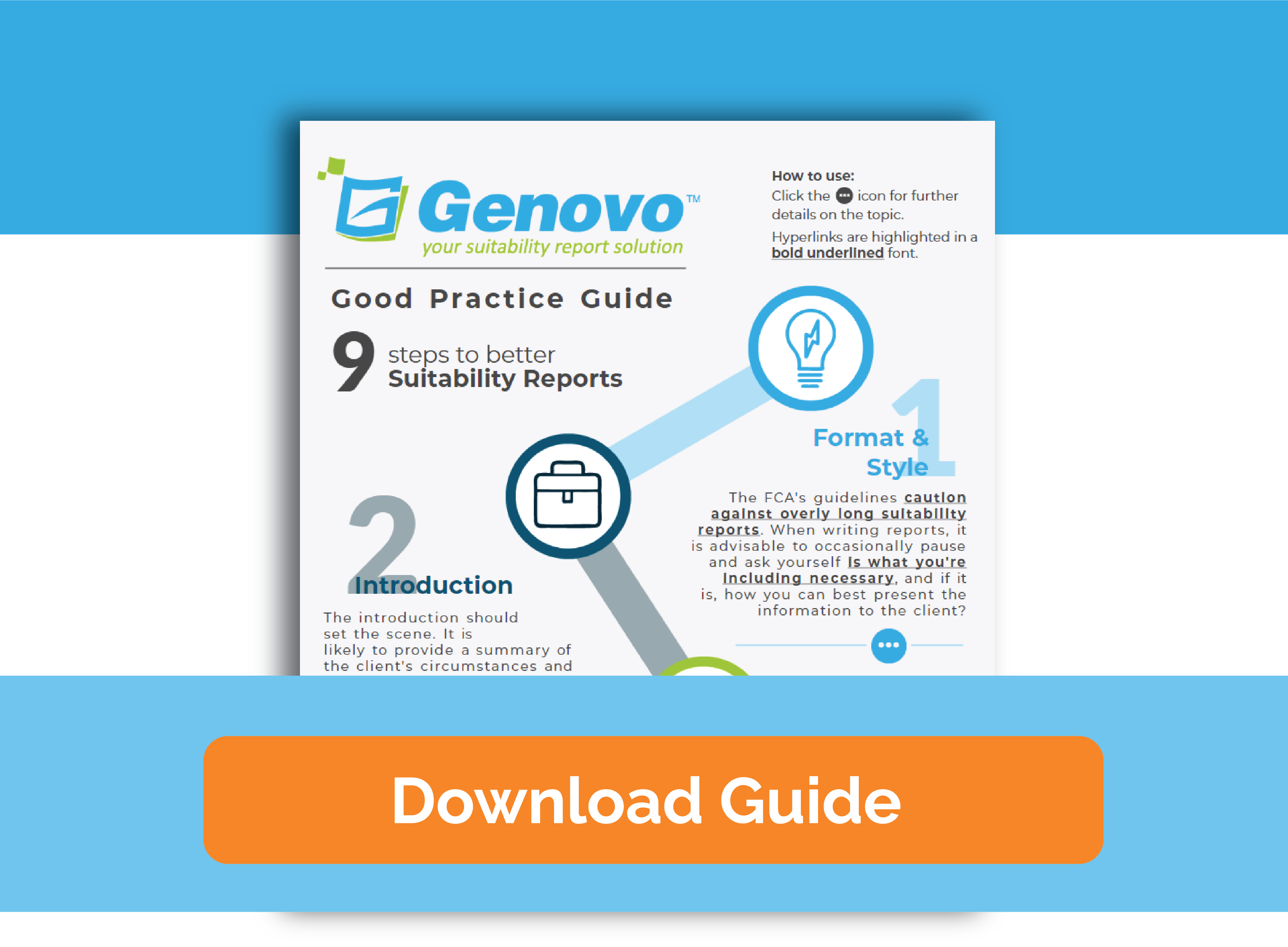
How Genovo can help you meet the requirements of Consumer Duty
Nigel Ogram
 |
IMPORTANT – This user tip relates to an older version of Genovo. Although much of the content and many of the concepts still apply to the current version of Genovo, the screenshots and some instructions may no longer be accurate. |
Welcome to November’s User Tip Blog. After the relatively lightweight nature of the last couple of blogs (Investment Library and Additional Permitted Subscriptions), I drew the short straw and somehow volunteered to write about Consumer Duty.
However, before you glaze over and hit the ‘back’ button, this blog ISN’T a summary or analysis of Consumer Duty – there’s already a vast array of excellent commentary out there without me adding any more to it. If you really want to read about it, you can download and read the document itself.
What this blog aims to do is show you how Genovo is already helping you meet your Consumer Duty obligations and how we’re working to make it even better.
What (very briefly) is Consumer Duty?

‘PS22/9’ – an innocuous little FCA reference that has wide-reaching implications for financial services. The reach of the legislation is vast – “a new Consumer Principle that requires firms to act to deliver good outcomes for retail customers”. It’s a bit like ‘TCF on steroids’!
My guess is that most advice firms are already doing the majority of what’s needed, as a standard good practice. Consumer Duty is now formalising the requirements and compelling you to evidence that you’re doing it. So – what is it?
- If you have nothing better to do, have a read – https://www.fca.org.uk/publication/policy/ps22-9.pdf
- It is client outcome-based, rather than a definitive “you must…” or “you must not”.
- It’s not a tick-box exercise – it’s a fundamental change to underlying culture.
- There are four outcomes – the one that Genovo helps you with is the third – The consumer understanding outcome(straight to chapter 8 on page 50 if you’re reading the FCA document…)
- FCA wants “firms to ensure their communications are likely to be understood by the customers intended to receive the communication.”
Where does Genovo fit in?
Suitability reports are the main method by which an advice firm formally communicates the advice to the client and as such, they are a key part of the adviser / client relationship and a fundamental part of client understanding.
Genovo is a small but extremely important part of the ‘tech stack’ that can assist firms in meeting and evidencing compliance with Consumer Duty. All your client due diligence, factfinding, research and analysis will mean nothing if your client doesn’t understand what you’re advising them to do, or why you’re advising it.
As well as documenting the original recommendation, ongoing reviews (and the associated review report) are also important, as they can assist with evidencing ongoing compliance with the Consumer Duty principle for ensuring good client outcomes.
What does Genovo already do to help you with Consumer Duty requirements
At Genovo, we’re proud of our report content – it is designed to be easily read and understood by a client. This is much more than just the words we use. We also already employ several other features to help you with Consumer Duty:
- We use clear, concise language, adhering to the principles of the Plain English Campaign.
- Genovo allows lots of report personalisation at multiple stages, helping to make the report as much about the client as about the recommendations.
- We allow customisation to generate reports with tables, accent colours and images which help break up the text and make the report more visually appealing.
- For suitability reports, we provide an Executive Summary to allow readers to see a précis of the content.
- Genovo review reports provide a Review of Your Service step to demonstrate how the service you have provided during the review period has added value and delivered good customer outcomes as expected of you under the ‘price and value outcome’ of Consumer Duty.
- Jargon is avoided where possible, but if it can’t be avoided, a context-sensitive glossary is included in the report appendix.
- Repetition in a report is always undesirable. Genovo’s context-sensitive report content avoids the need for bulky, generic report content, which makes the report easier to read.
What new stuff have we done?
We’re confident that Genovo reports are great for clients, but we accept that there’s always room for improvement. So, we ran a Genovo suitability report through Microsoft Word’s ‘ease of reading’ scoring system (there are lots of other scoring systems out there – just Google “readability”).
We could have picked one of Genovo’s simpler reports to generate a great score, but that’s not how we work. We therefore deliberately selected a ‘busy’ report – a review of existing investments, including replacement business, plus some ‘new money’, then a change to the investment strategy and generation of income. Not an unusual scenario by any means, but way more complex than topping up a client’s ISA.

We were fairly pleased with a 94% score. Whilst 47.4 on the Flesch Reading Ease score doesn’t bode well for a Sunday afternoon’s light reading, it’s pretty good for a document with a lot of unavoidable technical terms and formal phraseology. If you want to know more about the Flesch Reading Ease and Flesch-Kincaid Grade Level, have a look at the Wikipedia page.
However, at Genovo we don’t rest on our laurels, and we’re always up for a challenge, so we initiated a project to review all the boilerplate content of Genovo, as well as reviewing all the advice options and reasons – a vast undertaking that’s still underway.
After applying the changes we’ve identified so far, we ran the report through the ‘ease of reading’ test again.

OK, so it’s not a massive improvement, but we were starting from a pretty decent score and as a certain supermarket says, ‘every little helps’! In particular, the sentences per paragraph and words per sentence both decreased slightly – these are both key elements of the approach promoted by the Plain English Campaign.
By the way, just because we could, we checked a Genovo Review Report:

What more can you do?

“You can please some of the people all of the time, you can please all of the people some of the time, but you can’t please all of the people all of the time”
Apparently coined by the poet John Lydgate (no, me neither…) but more famously adapted by President Abraham Lincoln, it’s a phrase that lends itself well to Genovo. We take great care with the content of Genovo to try to make it acceptable for our 3000+ Genovo users, but we accept that some firms will want to use their own text for some elements of their reports to help even further with aiding client understanding. Genovo provides functionality to do this.
Genovo’s Report Content Manager allows users to customise the standard Genovo text or completely replace it with their own text. There’s a whole section of the Genovo Knowledge Base that’s devoted solely to Report Content Manager, including an informative five-minute video that gives a great overview of what can be done and how you can do it. Even the report cover letter can be customised to your own writing style.
So, am I all sorted for Consumer Duty?
The unbeatable combination of Genovo’s excellent ‘out of the box’ content, together with the ability to customise it if required, means that as far as suitability reports and review reports are concerned, the ‘consumer understanding’ outcome of Consumer Duty should hold no fears for a Genovo user.
Obviously, suitability reports and review reports are only a couple of the many communications that an advice firm may have with a client. Consumer Duty expects that all communications with a client are expected to be understandable. This clearly means all your letter and emails, but less obviously, your brochures, website, your social media and even the way that you and your staff speak to clients – told you it was wide reaching!
We think you could do a lot worse than applying Genovo’s approach to all your client communications – think of yourself as a human version of Google Translate – turning complex financial information into words that a client can easily understand!
Further Reading
You’ll find loads more really useful information in:
- Genovo’s series of User Tip blogs;
- the extensive Genovo Knowledge Base;
- the collection of really useful Genovo matrices;
- the ever popular Genovo video tutorials; or
- by attending one or more of our regular monthly training webinars.
Of course, if you’re still stuck, or just need a helping hand, you can always submit a support ticket and we’ll get straight back to you.
Finally – make sure you don’t miss any of our hints & tips – subscribe and get email alerts when we update our blog.

